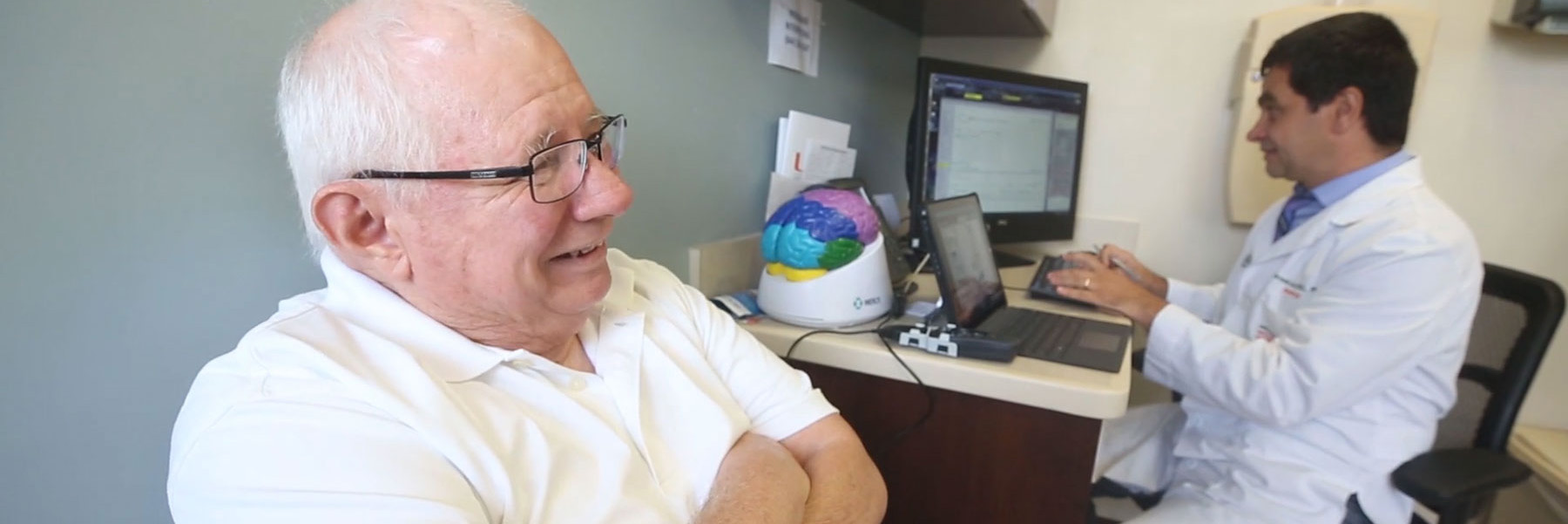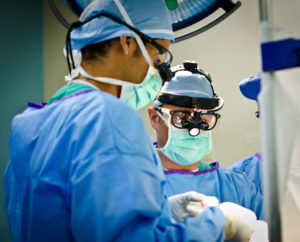The Tremors Stopped, So Life Can Start Again

Thanks to new Deep Brain Stimulation device, happiness is back on the table for Kenneth Girlardo and his family.
In July 2010, Kenneth Girlardo began experiencing severe, debilitating tremors.
Girlardo is a 71-year-old U.S. Army veteran from the Orlando area was experiencing the effects of Parkinson’s disease. Like many people living with Parkinson’s disease, he stopped responding to the half-dozen daily medications he took to control his tremors, making him a candidate for deep brain stimulation (DBS) treatment.
Parkinson’s disease is a slowly progressive, chronic neurodegenerative condition that affects up to 1.5 million Americans, with 40,000 to 60,000 new cases diagnosed each year. While its cause remains a mystery, about 15 percent of patients are diagnosed before age 50, and the disease affects one of every 100 persons over the age of 60.

“DBS is a well-established procedure for Parkinson’s disease, similar to a pacemaker for the heart,” explains University of Miami Health System’s Dr. Corneliu Luca, who helped guide Girlardo’s surgery. “By inserting wires deep in the brain, we are able to change the pathological oscillations, or arrhythmias, in the brain to a state that is physiologic, thereby reducing motor symptoms of the disease.”
Exciting new technology
The neurosurgery team implanted a recently FDA-approved DBS device – the Vercise – in Girlardo’s brain. It has eight contacts on each lead that deliver electric impulses to the brain, enabling physicians to deliver a prescribed amount of stimulation. It is the smallest rechargeable DBS device available in the U.S. and has a battery life of up to 15 years, minimizing the need for replacement surgery.
Dr. Jonathan Jagid, who has performed approximately 1,000 DBS surgeries, said that Girlardo’s procedure was “perfectly smooth.”
Luca and Jagid played a pivotal role in clinical trials of the Vercise DBS system for FDA approval as part of UHealth’s Center for Parkinson’s Disease and Movement Disorders, South Florida’s only National Parkinson’s Foundation-designated Center of Excellence.
A return to normal life
When doctors recently activated and custom programmed Girlardo’s device, his tremors stopped. The husband and father became optimistic about living a normal life and, most of all, dancing with his wife again.
“I think it’s fantastic,” he said. “I never thought they [the doctors] could do what they did.”
“We’re very happy to see today that he had very good results,” said Luca. “His tremors improved 100 percent. After we turned on the device, he started walking. The stiffness he was experiencing also improved tremendously.”
The system is operated by a remote-control device, which Luca programs and shows patients how to use to apply stimulation on their own.
“It’s user-friendly. It’s not just the doctor who can do it,” said Girlardo. “I feel very lucky that things went well.”
With family by his side, Girlardo beamed with optimistic pride, because he is now able to keep his tremors at bay and move with ease. He is even returning to playing golf, since he has also regained the ability to swing his arms.
“I hope this technology helps improve the time he can spend with the family — especially my kids, his grandkids,” said his son, Kenneth Girlardo Jr. “I hope that he’s able to do more of the things that he used to be able to do.”
Tags: deep brain stimulation, neurology, neurosurgery, Parkinson’s disease
